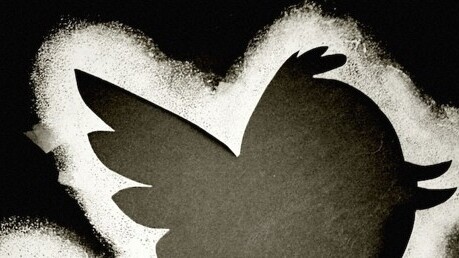
While Twitter has steadily gained momentum over the past five years, in 2011 it finally felt like it became established as an essential part of not just the Web technology scene, but of global culture as well.
Here we take a look back at what was a busy year for Twitter, both as a company and as a communications medium.
A year of big growth
Twitter turned five years old in July, but it hasn’t stopped growing with records being broken repeatedly throughout 2011. As the year began, New Year’s Eve saw 6939 tweets sent each second in Japan – a global high at the time. In July, the women’s soccer World Cup final between Japan and the USA beat that rate with a new record of 7196 tweets per second. The following month, Beyoncé revealed that she was pregnant during the MTV Video Music Awards, taking tweets-per-second to a new high of 8868.
In March, to coincide with the fifth anniversary of the first test tweet being sent, Twitter said that it was now handling 1 billion tweets per week, and around 177 million per day. By June, Twitter was handling 200 million tweets per day – enough, it said, to write a 10 million page book.
After avoiding the issue in the past, Twitter finally revealed official active user numbers in September. CEO Dick Costolo said that the service saw 100 million active users per month, 55% of them accessing it via mobile devices. He also noted that Twitter.com has more than 400 million monthly unique visitors, according to its Google Analytics figures, an increase of 150 million in just nine months. To help deal with this growth, the company took on new datacenters.
A visualization of all tweets mentioning ‘11.11’ or ‘11.11.11’ on 11 November 2011.
As its user numbers grew, so did Twitter’s international presence. In February, it began hiring ad sales staff in the UK, for an office it announced initially back in 2010. In April, it appointed its first country-specific manager, for Japan. A partnership with Japan’s Mixi was announced in November which will see the two companies work together on product development, new business services and advertising opportunities. Ireland became the third country outside the US to get a Twitter office, when a Dublin presence was announced in September.
Twitter expanded in the US too, with a New York City office announced in August, which was officially opened by Mayor Bloomberg in October.
Jack’s back, Biz steps away
 Twitter’s co-founder, Jack Dorsey returned to the company to lead product development as Executive Chairman in March, kicking off a year of rapid changes. Amazingly, Dorsey kept his role as CEO of mobile payments startup Square too, reportedly working 16-hour days, split equally between the two companies.
Twitter’s co-founder, Jack Dorsey returned to the company to lead product development as Executive Chairman in March, kicking off a year of rapid changes. Amazingly, Dorsey kept his role as CEO of mobile payments startup Square too, reportedly working 16-hour days, split equally between the two companies.
In June, Dorsey’s fellow co-founder Biz Stone stepped back from Twitter to concentrate on other projects at Obvious Corporation, the organisation that the microblogging platform sprung out of. At the time, our own Brad McCarty painted Stone as “Twitter’s Michelangelo.”
Reflecting its growth in stature, Twitter hired a presence in Washington DC, in the shape of a former FCC adviser whose role at Twitter is Director of Public Policy.
However, it wasn’t all positive news when it came to staffing at Twitter. A number of high-profile departures led to rumors of management problems. From key engineering talent like Mike Abbott, Evan Weaver and Tweetie creator Loren Brichter, to VP of Consumer Marketing, Pam Kramer, Media Partnerships team member Robin Sloan and head of communications Sean Garrett, it was an exodus that got tongues wagging as talk of turf wars and personality conflicts did the rounds.
New features, #NewNewTwitter
 Twitter introduced so many changes and enhancements this year that it was almost impossible to keep up.
Twitter introduced so many changes and enhancements this year that it was almost impossible to keep up.
One of the most noticeable developments was Twitter’s embracing of images. In conjunction with Photobucket, it began hosting images for its users, a move which shook up the social image hosting market. You could even upload images directly from Twitter’s site and post images via MMS from your phone on selected carriers, while your profile received a gallery of images you’d shared.
Twitter did serious work on helping users discover new people to follow this year. A new Connections feature launched in January, showing followers and friends you have in common with people whose profiles you visit. A topic-based Who To Follow section opened in April, although grammar nerds insisted that it really should have been called ‘Whom To Follow’. In fact, interests became a focus for Twitter, as it revamped its homepage to describe its service as a way to “Follow your interests“.
Twitter rolled out a new Activity tab on users’ profiles during the second half of the year, sharing our actions such as following users, creating lists and favoriting tweets.
In August, Twitter retired the version of its website that had existed from the service’s early days, forcing all users to adopt ‘New Twitter’ the radical redesign it had announced in 2010.
By December, users had another complete redesign to deal with, as ‘New New Twitter’ was revealed. With fresh icons and a new layout, the makeover sought to simplify things, and was unified across its website, mobile site and most of its apps. It brought in ‘Connect’ and ‘Discover’ tabs, the former consisting of mentions and interactions, the latter comprising search, trends and user discovery features. While not everyone was keen on the new look (and third-party apps like Tweetbot saw a boost as users moved away from the official offerings), we thought the Discover tab was a game changer. Twitter itself said that the changes were all about simplicity.
Some changes this year were designed to make Twitter more accessible internationally. In February, it revealed its first crowdsourced translations, into Indonesian, Russian and Turkish. Five more languages were rolled out in September. In April, 70 new locations received dedicated local trends support.
Other developments this year included automatic link-shortening on Twitter.com; an embeddable Follow button; improved security through HTTPS support; the ability to see Twitter as other users see it; and extra features for its SMS service. There was also an official Mac app, which launched with the Mac App Store in January.
The Dickbar fiasco
Not all Twitter’s new features were well received. In March, an update to its iOS app brought in a seemingly innocuous feature called the Quickbar. This UI element displayed current trends in the app’s main view. Twitter quickly discovered how precious its users were about their mobile experience though, as widespread displeasure saw the Quickbar renamed the ‘Dickbar’ in honor of CEO Dick Costolo.
An app for jailbroken iPhones allowed users to remove the Dickbar, but an official solution wasn’t far away. By the end of the month, Twitter had killed it, noting “We believe there are still significant benefits to increasing awareness of what’s happening outside the home timeline. Evidence of the incredibly high usage metrics for the QuickBar support this. For now, we’re going back to the drawing board to explore the best possible experience for in-app notification and discovery.”
Apple and Twitter, sitting in a tree, I-N-T-E-G-R-A-T-I-N-G
Perhaps the biggest news for Twitter this year was that Apple was to build it in to the latest version of iOS. Being able to add multiple Twitter accounts to your iPhone, iPod Touch or iPad’s Settings, meant you could now share photos on Twitter straight from the Camera Roll, websites from Safari, videos from the YouTube app and such like.
We called it a game-changing social play for Apple, and it was a huge success for Twitter too. By November, iOS was the 7th biggest image-sharing service for Twitter, and 39% of all tweeted photos were posted from an iPhone. In December it was announced that Twitter signups were up 25% since iOS integration.
Twitter vs Developers
 Twitter’s rocky relationship with developers continued this year. In February, Twitter suspended UberTwitter and Twidroyd, two third-party apps from UberMedia, due to privacy problem which may have seen DMs made public and a trademark violation.
Twitter’s rocky relationship with developers continued this year. In February, Twitter suspended UberTwitter and Twidroyd, two third-party apps from UberMedia, due to privacy problem which may have seen DMs made public and a trademark violation.
Although the apps were later reinstated following the issues being resolved, UberMedia soon appeared to aim to bypass Twitter entirely when it was reported in April that it was aiming to build its own rival messaging network. With it said that the company’s apps were responsible for as much of 20% of daily tweets, the idea of UberMedia tempting its users to a completely different network was at least an interesting suggestion, although nothing has come of it.
In March, Twitter dropped a bomb – it didn’t want developers to build Twitter clients any more. Given that Twitter’s scale was partly achieved by support from third-party apps, this was met with some anger by the development community. However, Ryan Sarver of the company’s platform and API team explained that apps were “the core area” it was investing in, and “There are much bigger, better opportunities within the ecosystem.”
One direction Twitter encouraged developers to take was data analysis, making sense of all the information from the huge number of tweets being generated each day. For example, UK startup MediaSift raised a $6m funding round for its Datasift tool which does just that.
After some tumultuous times, Twitter aimed to ease developer relations with a new dedicated site and by actively seeking candid feedback. In July, it announced that there were now one million registered apps built by more than 750,000 developers. In October, Ryan Sarver extolled the virtues of Twitter’s developer ecosystem in an interview with The Next Web, stating: “Between January and June this year, the developer ecosystem saw half-a-billion dollar investment coming in, but what was really cool over that same period, there was over a billion dollars worth of exits”
Acquisitions
The biggest name Twitter acquired this year was UK-based Tweetdeck, which produces the hugely popular ‘pro’ Twitter client. The deal had been rumored for weeks beforehand, and the app has since been given a complete overhaul, with native Windows and Mac versions for the first time, although with a number of features missing from this at present, many users are sticking with previous versions.
Other acquisitions this year included AdGrok, to boost its monetisation efforts; marketing intelligence startup Backtype; list sharing product Bagcheck; social research startup Julpan, and security company Whisper Systems. Technology from the Whisper Systems deal is set to be open-sourced.
In the Middle East
While Twitter generated plenty of headlines in the tech press, it made its presence felt in the wider world to a greater level than ever before.
Upheaval in the Middle East saw Twitter used among other social networking tools to help spread news of the rapid political changes that took place in countries like Egypt and Tunisia. In Tunisia, we noted that Twitter has limitations in following events when there are so many tweets coming in at high speed. Still, too many tweets is better than none at all, something that was threatened when Egypt’s government cut off Internet access to much of the country.
Twitter was blocked in Egypt and Camaroon as Middle East and North African uprisings continued. This brought the issue of social media censorship to the forefront of many people’s minds. Twitter co-founder Biz Stone opined that “The tweets must flow,” explaining that the company’s goal was to “keep the information flowing irrespective of any view we may have about the content.” He explained that Twitter was working with Chilling Effects to log all takedown notices it received, requesting the removal of tweets. These were to be tweeted from @ChillFirehose, although it’s worth noting that this account stopped tweeting in February.
In the media
 Twitter has been keen to encourage a greater uptake of Twitter in media circles, most notably launching Twitter for Newsrooms in June. The role of tweets in reporting was raised repeatedly throughout the year.
Twitter has been keen to encourage a greater uptake of Twitter in media circles, most notably launching Twitter for Newsrooms in June. The role of tweets in reporting was raised repeatedly throughout the year.
In February, it was ruled in a UK court that public (unprotected) tweets could be quoted in the press without journalists seeking permission from Twitter users. Later in the year, journalists in England and Wales were allowed to report from court proceedings via Twitter without needing to seek specific permission at each case.
Twitter also became a more common source of official information this year. In April, the UK’s West Midlands Police announced results from court cases heard at Birmingham Magistrate’s Court would be published to Twitter to ensure the public are more aware of the cases the force deals with.
 Another UK police force controversially tweeted the names and addresses of rioters over the summer, and the idea of blocking the use of Twitter and other social communication methods, or enforcing a real-names policy on Twitter, was briefly a talking point in the aftermath of the riots.
Another UK police force controversially tweeted the names and addresses of rioters over the summer, and the idea of blocking the use of Twitter and other social communication methods, or enforcing a real-names policy on Twitter, was briefly a talking point in the aftermath of the riots.
Not everyone was happy with the kinds of information being spread via Twitter this year though. Twitter found itself sued by footballer Ryan Giggs after the existence of a ‘super injunction’ banning the reporting of an extra-marital affair he had conducted was made public via a tweet. Twitter users then used his name en-masse in tweets, helping to make the story (and his role in it) public knowledge and rendering the whole injunction moot. The power of Twitter as a medium to trump traditional media was proven beyond doubt yet again.
Twitter’s importance as a communication medium was demonstrated again and again throughout the year, with NBA coaches banned from mentioning or retweeting players during ‘lockout’, and Thais facing a stint in jail and a hefty fine if they were caught commenting on any of the country’s election candidates or political parties on Twitter.
Money
 With all the impact that Twitter has generated this year, it’s easy to forget that Twitter is a business still seeking a solid revenue stream and profit.
With all the impact that Twitter has generated this year, it’s easy to forget that Twitter is a business still seeking a solid revenue stream and profit.
To this end, Twitter tweaked its promoted content offerings throughout the year. In June it placed Promoted Tweets directly into users’ timelines, expanding them to appear in all Twitter clients in September. That was the same month it launched its first UK-specific campaign. While until now, advertisers have had to deal directly with Twitter staff to book ads, the next stage is a slow rollout of self-service advertising.
Twitter ads are pricey – it was reported in June that Twitter put a Promoted Trend at $120,000 per day. Still, the company is seemingly doing something right, Dick Costolo said that 80% of advertisers came back to book repeat slots. It has also found time to launch an Ads For Good program for charities to get free promotion.
Meanwhile, Twitter’s own data continued to be an additional revenue stream. In addition to charging third parties for firehose access, the company renewed its deal with Bing to bring tweets into social search. However, a similar deal with Google expired and has not been renewed.
Investors still see Twitter as a potential goldmine for the future. Andreesen Horowitz bought $80 million worth of Twitter stock on secondary markets early in the year. In August, Twitter confirmed another round of funding led by DST Global, and in December Saudi Arabia’s Prince Alwaleed bin Talal took a 3% stake in the company.
There was little sign of an exit for Twitter’s investors yet though, save for rumours of acquisition talks at a $10 billion valuation. Google emerged as the potential suitor, although Dick Costolo brushed this off as nothing more than a rumor.
And 2012?
Twitter has set itself up for an intriguing 2012. Can it maintain its place as the heartbeat of social activity across the Internet? Can it attract enough self-service advertisers to drive it towards long-term profitability? Will third-party developers play nice? And will its investors finally get their lucrative payday?
Join us at TNW Twitter throughout 2012 to find out!
Read all our 2011 round-ups here.
Image credits: Andreas Eldh; David Shankbone; Sven Batstra; BinaryApe; 401K
Get the TNW newsletter
Get the most important tech news in your inbox each week.










